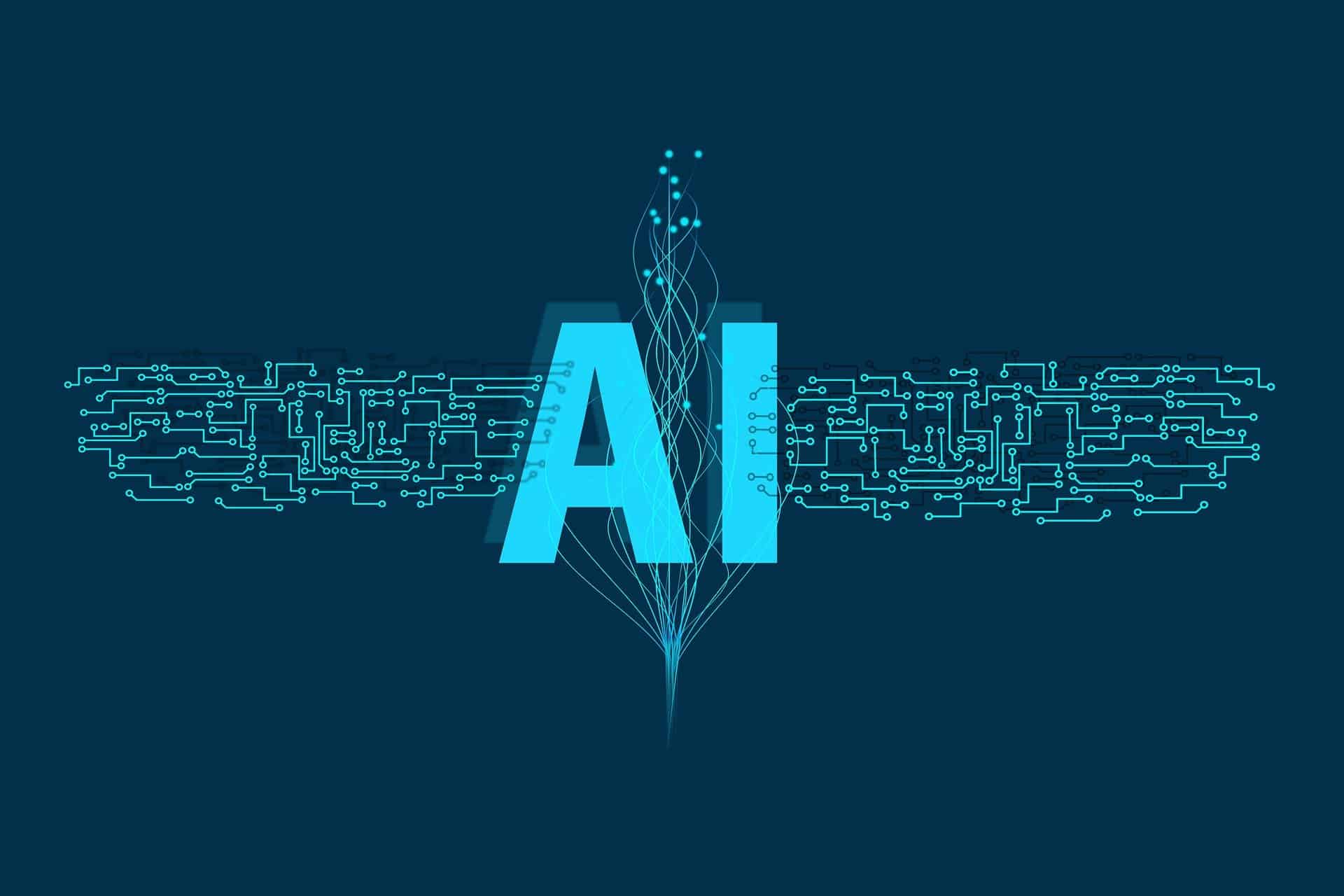Why Software-as-a-Service is Essential for Modern Digital Transformations
Is your business in need of a digital transformation? Learn why Software-as-a-Service (SaaS) has become an integral part of modern companies' strategies.

Software-as-a-Service (SaaS) is revolutionizing the way businesses operate in the digital age, allowing them to quickly adopt new technologies and leverage data more effectively. By enabling companies to transition faster to digital solutions and reduce operational costs, SaaS is a key component of successful digital transformation strategies.
Software-as-a-Service (SaaS) is essential for modern digital transformations because it offers several benefits that help organizations find the right solutions faster and quickly realize a return on investment. In addition, SaaS enables companies to start small and scale fast, improving resource allocation and operation efficiencies and enabling new business models.
Consolidating the costs of maintenance, hardware infrastructure, and related IT overhead across all end-users, SaaS vendors can leverage vast economies of scale to deliver a better software experience at a lower total cost of ownership.
What is Software-as-a-Service?
Software-as-a-Service is a type of cloud computing service in which users access software applications remotely, on demand. SaaS eliminates the need for businesses to invest in purchasing and managing on-premise software and hardware, as the software is maintained by the provider and accessed via the internet. This provides numerous advantages such as cost savings, scalability, faster deployments, data security, customization capabilities and improved collaboration.
Software-as-a-Service has revolutionized the way businesses access software solutions, allowing them to quickly develop innovative solutions without having to worry about resources, infrastructure and deployment. As a result, SaaS-based applications offer a cost effective, flexible digital transformation tool that enables businesses to be competitive and efficient in today's digital sphere. Furthermore, SaaS is changing the way businesses operate by providing automated processes and powerful capabilities such as real-time analytics and artificial intelligence that can help organizations gain an edge over the competition.
• Customer Relationship Management (CRM)
• Customer Service Management (CSM)
• Enterprise Resource Planning (ERP)
• Accounting and billing
• Collaboration
• Human Resources
• Web hosting and e-commerce solutions
Benefits of SaaS for Businesses
SaaS offers a range of benefits for businesses. It provides companies with access to up-to-date applications which can be easily scaled to meet the organization's changing needs. With SaaS, organizations can enjoy significant cost savings in terms of IT infrastructure, installation and maintenance expenses. Additionally, data is securely stored and managed off-site by the provider, meaning businesses don't have to worry about data privacy or security. Lastly, businesses that use SaaS only pay for the services they need and there are no long term contracts involved.
Software-as-a-Service (SaaS) has become increasingly popular as businesses of all sizes are starting to use it to accelerate their digital transformation. SaaS applications enable organizations to easily implement and manage complex solutions without investing in heavy IT infrastructure or additional resources. It also reduces the amount of technical expertise needed to maintain various systems, freeing up IT staff for other tasks. Furthermore, SaaS solutions enable companies to quickly deploy new services while providing better customer experiences with environmental flexibility, scalability and cost efficiency. By leveraging SaaS solutions, businesses have access to cutting-edge applications that keep them competitive in the market.
SaaS is an on-demand model that lets users access software and applications in the cloud, freeing them from the burden of purchasing and managing complex software and hardware.
Users pay subscription fees for the software they need when needed, so executives can adopt a “try-fail-try-again” approach to innovation without incurring high costs. SaaS also allows businesses to integrate digital capabilities into their core business strategy while remaining competitive in the global market.
SaaS accelerates digital transformation by enabling organizations to access software over the internet instead of installing it on-premises. This has completely changed the way organizations use software, making it easier and quicker for businesses to provide their clients with innovative solutions.
How Does SaaS Help Streamline Digital Transformations?
Software-as-a-Service is an essential component for companies undergoing digital transformations. It enables businesses to streamline their operational workflow and access new software without needing to purchase expensive licenses. With SaaS, businesses can quickly test out different solutions with minimal risk and get more for their money as the provider manages all the updates and maintenance in the background. As a result, businesses can have complete transparency over their IT operations and ensure that they remain compliant with industry regulations.
By leveraging the cloud, SaaS helps businesses scale their IT operations to meet the demands of digital transformation. Services like Amazon Web Services and Microsoft Azure offer a wide array of tools that allow enterprises to quickly deploy applications. Additionally, SaaS solutions provide greater control over digital infrastructure without needing to invest in hardware or licenses. The provider manages everything from updates to maintenance and provides customized support based on business needs. This reduces digital complexity and ramp-up time for development projects so that businesses can accelerate their digital transformations.
Challenges with Software-as-a-Service Solutions
While SaaS providers offer an affordable way to access the latest software and keep track of the IT operations, there are still some challenges associated with the technology. For example, businesses may struggle to transition away from their existing hardware and software solutions without proper planning or technical expertise. Additionally, companies need to ensure that their chosen SaaS solutions are compliant with relevant industry standards before they can adopt them in their digital transformation projects.
Security is also a major concern for SaaS providers. For businesses to trust hosting their mission-critical workloads with third-party vendors, they need assurance that their data and business operations are protected against malicious threats. Companies should research the security policies of prospective SaaS providers and ensure that they deploy multiple layers of authentication and encryption to keep customer data safe. Furthermore, to maintain their control over corporate data, digital businesses must take advantage of SaaS options that offer granular access controls and user management capabilities. This will help them grant only specific permissions to users based on their roles within the organization and monitor their activities on hosted applications or systems.

SaaS is touted as a digital transformation enabler promising lower operation costs and high business productivity.
SaaS is essential for modern digital transformations because it reduces time-to-market, improves resource allocation and operation efficiencies, and enables new business models while reducing costs.
Making the Most of Your SaaS Investment
To get the most out of your SaaS investment, it's crucial to properly manage and maintain the software. This means setting up processes and procedures for how the software will be used, as well as assigning qualified technical personnel to handle any issues that may arise. Additionally, you'll want to make sure your SaaS provider offers a great support team or 24/7 technical assistance should there be any issues with their services. By having these components in place before adopting a SaaS solution, your business will ensure that it fits seamlessly into its operations and drives desired outcomes.
Additionally, it's essential to properly monitor and measure the performance of the SaaS product. This can be done through the use of analytics and metrics that provide insights into how users are interacting with the system. This data can inform how your business is adopting and using the solution, as well as identify areas for improvement. Monitoring software performance allows you to optimize usage to ensure you get maximum benefit from the SaaS product. Furthermore, tracking adoption helps determine if users are actually taking advantage of all the features available or if more user education is needed. By monitoring and adjusting your implementation plan accordingly, you'll ensure that your digital transformation initiatives don't stall out due to lack of user adoption and that you can effectively move forward in an efficient manner.
How does SaaS improve resource allocation?
Software as a Service (SaaS) is a cloud-based software delivery model that allows users to access software over the internet on a subscription basis rather than having to install it on their systems. SaaS improves resource allocation by consolidating the costs of maintenance, hardware infrastructure, and related IT overhead across all end-users
This enables SaaS vendors to leverage vast economies of scale to deliver better software experience at a lower total cost of ownership. By using SaaS solutions, companies can improve operational efficiencies and enable new business models.
As part of digital transformation, most companies have started to outsource basic capabilities to SaaS providers. In addition, many companies are reaching the point where they have outsourced as many services as possible. But this is not the end of the transformation journey. The next step is to outsource the optimization of resources to fit project needs.
By outsourcing resource allocation strategies to SaaS providers, companies can focus on their core competencies while leaving non-core activities such as IT management and maintenance in the hands of experts. This allows them to allocate resources more efficiently and effectively, improving productivity and profitability.
SaaS Trend & Growth
SaaS (Software-as-a-Service) is becoming an increasingly viable choice for organizations in search of accessibility, functionality, and versatility in a cutthroat business environment.
Several trends are expected to shape the future of SaaS in 2023. One trend is the migration towards PaaS (platform as a service), which empowers businesses to build custom apps as add-ons to their original benefits.
According to BetterCloud, IT-sanctioned SaaS apps have increased tenfold since 2015. The total value of the global SaaS market has been showing stable growth over the last few years. In 2021, it was estimated at approximately $152.18 billion. In 2022, this value increased to $176.62 billion, growing by around 16% in one year.
Another trend is the increasing use of artificial intelligence (AI) and machine learning (ML) technologies in SaaS products. Integrations with other software and services are also becoming more common.
SaaS pricing is becoming more democratic, with many companies adopting subscription-based models that allow customers to pay only for what they use. Low-code development platforms are also gaining popularity among businesses looking to gain a competitive edge by quickly developing and deploying new applications.
The SaaS industry is expected to continue its growth trajectory into 2023 and beyond. Companies will continue to adopt cloud-based services to fulfill the needs of their remote workers, and innovation will drive new developments in AI/ML technologies, integrations, and pricing models.
Mobile First SaaS
A mobile-first approach in SaaS design refers to building a mobile version of a website or software before the desktop version.
This approach includes both apps and mobile-responsive sites but is more focused on apps. A mobile-first approach is becoming increasingly crucial for SaaS companies as businesses realize that not adopting this approach will negatively impact their growth. The future of mobile SaaS is app-driven, but not every SaaS company needs a mobile app. Instead, the decision to design an app must be based on the advantages an application could bring to their business, especially compared to a responsive website.
A mobile-first process allows enterprises to do more and gain a competitive advantage. Starting with designing for smaller screens makes sense because it's easier and more effective to start with a lightweight site designed for mobile and scale it up than vice versa. A well-designed UI for the mobile screen will function effectively on larger screens because essential user experience components are already clearly defined and developed.
In conclusion, adopting a mobile-first approach in SaaS design is becoming increasingly important as businesses realize that not doing so will negatively impact their growth. While the future of mobile SaaS is app-driven, not every SaaS company needs a mobile app. Instead, the decision to design an app must be based on the advantages an application could bring to its business. A well-designed UI for the mobile screen will function effectively on larger screens because essential user experience components are already clearly defined and developed.
According to various sources, some of the top enterprise SaaS products in recent years include Google Workspace for productivity and collaboration tools, Hubspot for marketing automation, Adobe Creative Cloud for creative software, Microsoft Office 365 for productivity tools, Salesforce for customer relationship management (CRM), ServiceNow for customer service management (CSM), Slack for team communication and collaboration, Asana for project management, Shopify for e-commerce platforms, and ServiceNow for IT service management.
Other notable SaaS companies include SurveyMonkey, SAP Concur, Mailchimp, Freshworks, Xero, Zoho, and GitHub. These companies offer various services, such as survey tools, expense management software, accounting software, and version control systems. The global SaaS market is expected to continue growing between 2021 and 2025.

Power of SaaS & AI
SaaS and AI (Artificial Intelligence) are two powerful and rapidly growing technologies that are increasingly being used together to create innovative solutions for businesses and individuals alike.
When SaaS and AI are combined, they can create robust solutions that enable businesses to automate and optimize their operations, improve customer experiences, and gain valuable insights from data.
For example, a SaaS platform that uses AI-powered chatbots can provide customers instant support and answer frequently asked questions, freeing customer service representatives to focus on more complex issues. Another example is a SaaS platform that uses AI-powered data analytics to help businesses uncover insights from large volumes of data, enabling them to make better-informed decisions.
The combination of SaaS and AI is transforming how businesses operate and creating new opportunities for innovation and growth. As both technologies continue to evolve and mature, we can expect to see even more powerful, and innovative solutions emerge in the years to come.
We are here to help you
In conclusion, SaaS has revolutionized how businesses operate, providing benefits such as cost savings, scalability, and accessibility. However, with so many SaaS solutions available, it can be difficult for businesses to choose the right one for their needs.
That's where ExterNetworks, your trusted SaaS experts, comes in. We have the expertise and experience to help businesses navigate the world of SaaS and find the right solutions to meet their unique needs. So whether you're looking to streamline your operations, improve customer experiences, or gain valuable insights from data, we can help.
Our experienced professionals will work with you at every step, from assessing your needs and recommending the right solutions to implementing and supporting those solutions over time. We understand that every business is different, so we take a customized approach to every project.
So, if you're looking for a partner to help you leverage the power of SaaS and achieve your business goals, look no further than ExterNetworks.
Contact us today to learn more about our services and how we can help you succeed.





